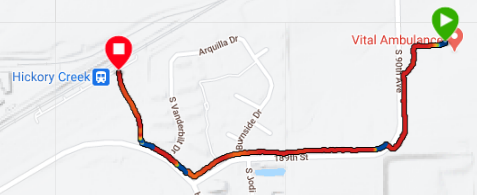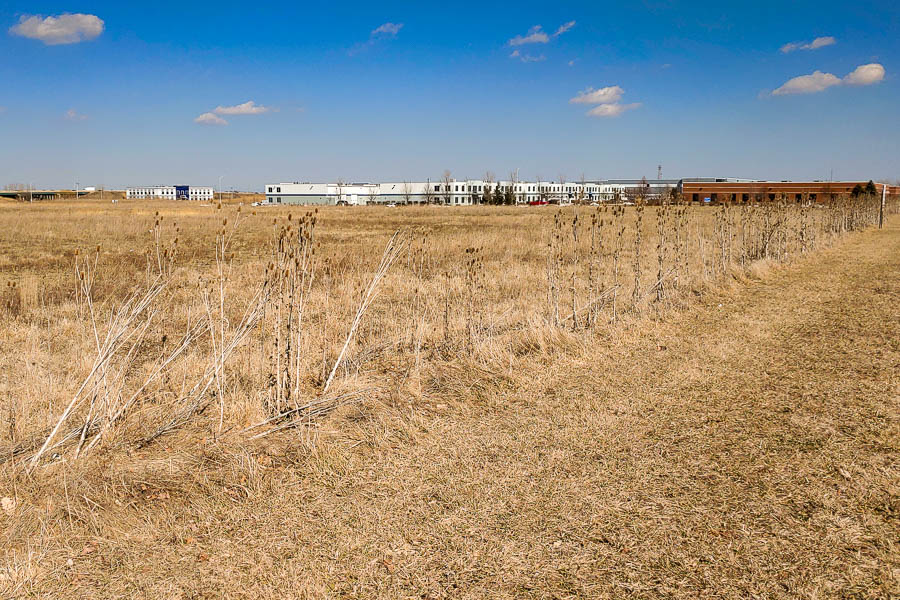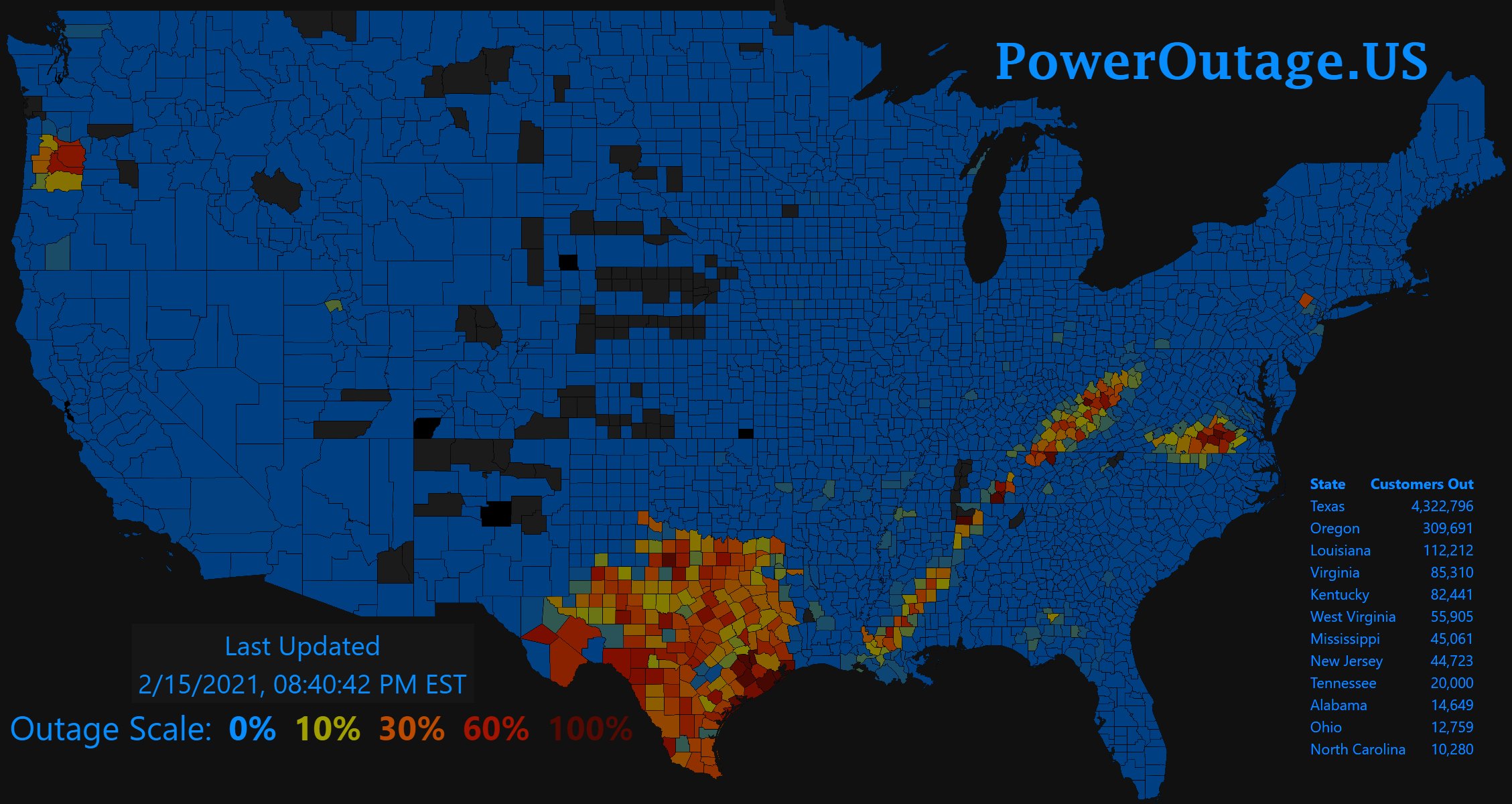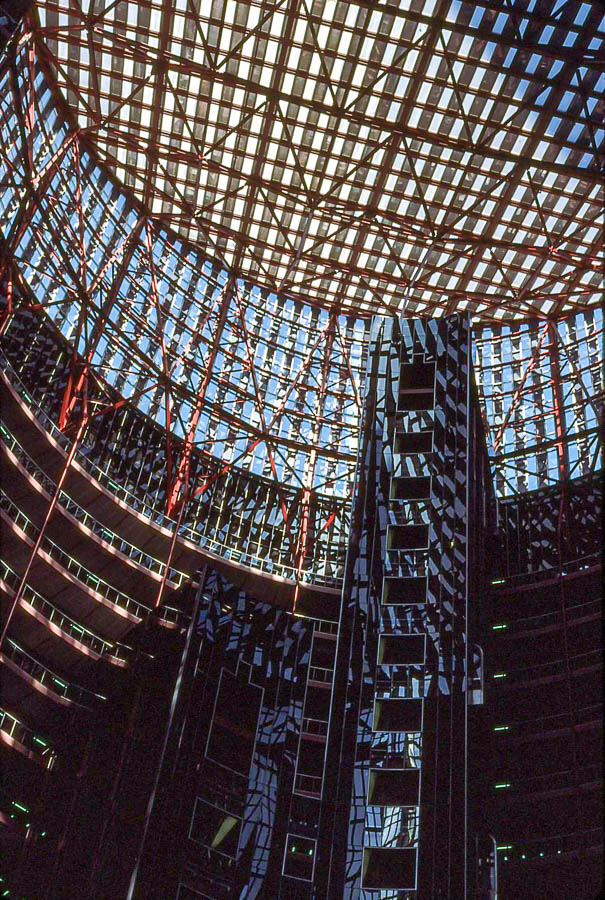As I mentioned in my post about Hailstorm Brewing that went out earlier today, you can have an excellent brewery with a TV-free taproom within 1500 meters of a Metra station and still qualify for the Brews and Choos project only on special dispensation. Because wow, getting from the Metra station to Hailstorm (and by extension, when I go later this spring, to Soundgrowler) might kill you.
Here's the path from the Hickory Creek Metra stop to Brothership Brewing:

It's short (just under a kilometer), along nearly-deserted exurban streets, and the streets have sidewalks for most of the way. Sure, you pass this:

But that's a typical landscape in northern Will County.
Now look at how you get to Hailstorm:

Why did I go through an ugly subdivision, several parking lots, and behind large industrial buildings instead of just walking down 80th Avenue? Because 80th Avenue is a six-lane arterial with no sidewalks and not a lot of stoplights. Cars drive down it at 90 km/h with nothing to slow them down except the stoplight at 183rd and the railroad tracks to the north.
And when I say "ugly subdivision," I mean a complete horror show of exurban McMansion architecture:

I really wanted to run over to some people I saw sitting in their garage and ask what series of life choices brought them to the decision to buy such an ugly house?
So, yes, I liked Hailstorm, and I hear good things about the tacos at Soundgrowler. But the entire point of the Brews and Choos Project is to drink beer safely. That means without driving to the breweries. But it also means not getting run over walking there. And the suburban/exurban landscape along the Cook-Will border (183rd St, on the map above) will kill your body if you walk along 80th Avenue or kill your soul if you walk through this development.
</rant>
Extreme cold and winter weather slammed Texas over the weekend, dropping temperatures to -9°C in Houston and causing snow in Galveston. But Texas politics has made the situation far, far worse as power failures have affected a quarter of all Texans:

As this map makes obvious, politics seems to have caused the worst of it. The right-wing Republican government of Texas slashed regulations and even disconnected Texas from the National Grid to avoid Federal rules. And now, the poorest and hardest-hit in the state are being charged extortionate rates for what little electricity the state can produce:
Until recently, the average price for electricity in Texas was a bit more than 12 cents per kilowatt-hour, according to the U.S. Energy Information Administration. Even before the storm's full effects were felt, Griddy warned its customers on Friday that prices rose to an average of around 30 cents per kilowatt-hour. Things got even worse over the weekend and the Presidents Day holiday.
With demand high and market pressures raising costs, wholesale power prices "were more than $9,000 per megawatt hour late Monday morning, compared with pre-storm prices of less than $50 per megawatt hour," Reuters reported.
While Republican Texas Governor Greg Abbott calls for an investigation into the regulatory body that his own party created, conservative trolls have tried to deflect their own malfeasance by claiming the renewable energy producers in Texas have failed, even though (a) only 10% of Texas electricity comes from renewables and (b) the renewable sources have actually increased their output to meet the new demand after the storm.
To put it bluntly, government policies favoring wealthy white men in Texas caused this entirely preventable, and entirely predictable, catastrophe. And, equally as predictable, the people most responsible for endangering the lives of their state's poorer and browner citizens have tried to blame everyone except themselves for it.
Meanwhile, about 10% of Oregon's residents went without electricity after a massive ice storm knocked out power lines and equipment throughout the Willamette Valley, resulting in the largest power outage in the state's history. Unlike the situation in Texas, this will not result in predatory pricing or people starving to death, because Oregon has a functioning government.
Annalee Newitz, author of Four Lost Cities, explains that urban collapse doesn't look anything like dystopian fiction would have it:
It’s always lurking just around the corner, seductive and terrifying, but it never quite happens. Lost-city anxieties, like the ones aroused by the pandemic, result from a misunderstanding of what causes cities to decline. Pandemics, invasions, and other major calamities are not the usual culprits in urban abandonment. Instead, what kills cities is a long period in which their leaders fail to reckon honestly with ongoing, everyday problems—how workers are treated, whether infrastructure is repaired. Unsustainable, unresponsive governance in the face of long-term challenges may not look like a world-historical problem, but it’s the real threat that cities face.
This slow-motion catastrophe—a combination of natural disaster and political indifference—was far more important to [Angkor's] transformation than the Ayutthaya invasion [in 1431]. And it stands as a warning to many cities in the U.S. Without a coherent response from local government, cities lashed by climate change will gradually lose their populations. The demise won’t be spectacular, even if the storms are monstrous. Instead, people will leave in dribs and drabs, and the exodus could take generations.
So, I'm going to stay in Chicago, which will likely remain a thriving urban center for hundreds more years.
As the State of Illinois starts abandoning the Helmut Jahn-designed Thompson Center in Chicago's Loop, the Governor's Office announced the state has purchased PepsiCo's old building at 555 W Monroe St:
The 18-year-old structure has 430,000 square feet of office space and has green certification for energy efficiency.
More than 1,000—and potentially 1,400—of the 3,500 state workers now based in downtown Chicago eventually will relocate to the new facility, starting in April, according to Ayse Kalaycioglu, chief operating officer of the Illinois Department of Central Management Services, which manages the state’s real estate needs.
About 900 of the employees moving to 555 W. Monroe will be coming from the Thompson Center, leaving 1,300 in the structure named after the named the former governor who championed its construction and mourned its declining fortunes. But they won’t be there long, said Kalaycioglu and Deputy Gov. Dan Hynes in an interview late yesterday.
I'm sorry to hear so many people calling the Thompson Center "so old" and "dilapidated" given it opened in 1984 and sits directly across the street from the century-old City Hall. But: "In comparison, the state says the Thompson Center has $325 million in deferred maintenance needs now, a figure projected to grow to $525 million by 2026." (I took the below photo about a year after it opened.)
The other story is that seven new pizza places have recently opened in the city, and I may have to try a few of them. That square of Bill's Original Tavern Pizza at the top of the article made me hungry.

Only 7 shopping days until Boxing Day! So, what's going on in the world?
And I will leave you with my alma mater's Canine Cognition Lab's kindergarten:
We're in the home stretch. We have 14 days until 2021 starts, and 32 days until the Biden Administration takes office. As Andrew Sullivan said in his column today, 2021 is going to be epic. Meanwhile:
And watch this blog for information about the Apollo Chorus of Chicago's final performance of 2020.
I'm looking out my office window at the light dusting of snow on my neighbors' cars, wondering how (or whether) I'll get my 10,000 steps today. My commute to work got me 3,000 each way, making the job tons easier before lockdown. Easier psychologically, anyway; nothing prevents me from going for a 45-minute walk except that I really don't want to.
Instead of a lunchtime hike, I'll probably just read these articles:
And just as a side note for posterity, we should remember that the President of Russia congratulated Joe Biden on his win before the Majority Leader of the US Senate did. The Republican Party must really not like democracy.
We've got a day and a half of autumn left in Chicago. Here's what I'm reading on a lazy Sunday:
And finally, new research shows that the pyroclastic flows from Vesuvius in 79 CE turned people's brains to glass. Yummy.
Someday, historians may discover what former Wisconsin governor Scott Walker—I don't have to remind you, a Republican—got in exchange for the ridiculous deal his administration made with FoxConn. After the Taiwan-based company created only a tiny fraction of the jobs it promised in exchange for billions in tax credits, the Wisconsin Economic Development Corporation has finally told them, no, you don't get all that money for nothing.
In other news:
Finally, Whisky Advocate has some recommendations for an essential whisky bar in your home.
A cold front pushed its way through Chicago this afternoon, making it feel much more like autumn than we've experienced so far. And it got pretty chilly in Washington, where Senate Republicans began the first day of hearings into the nomination of Amy Coney Barrett for the Supreme Court:
And much farther from home, Mars will be in opposition tomorrow night, coincidentally during the new moon, meaning we'll get a really good look at it.